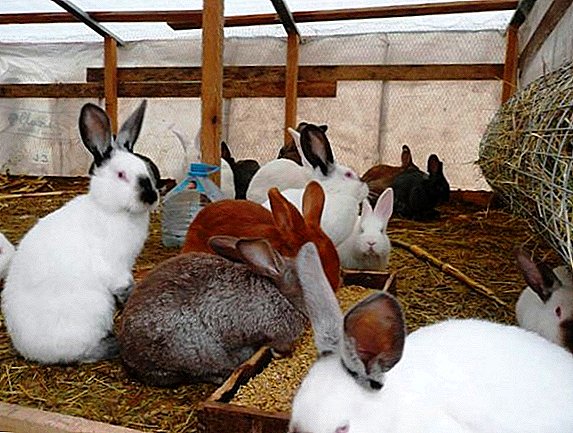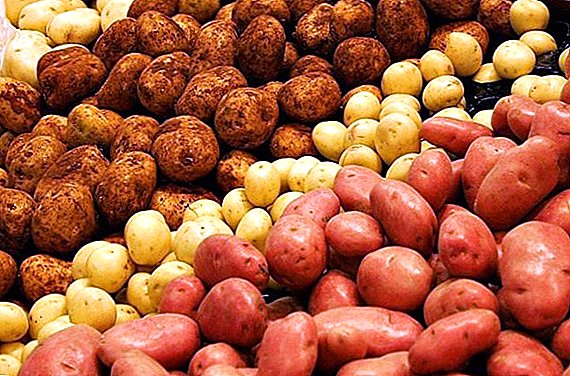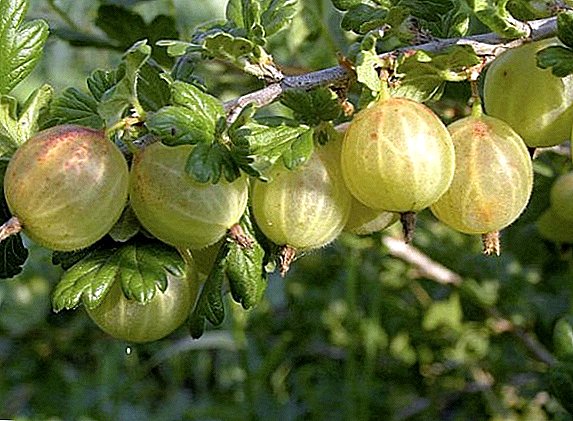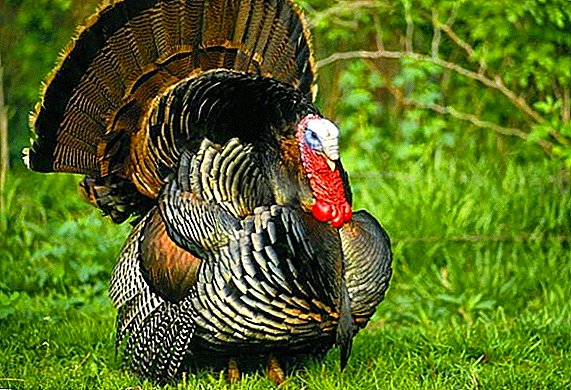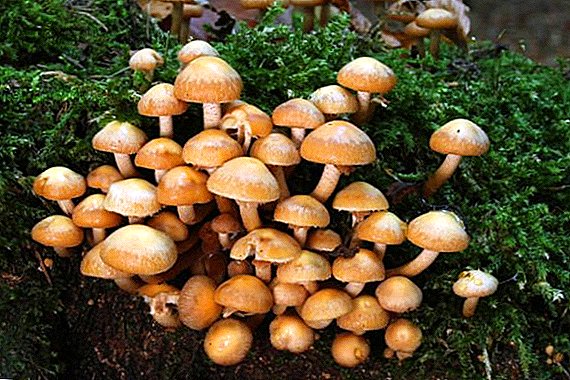 Within two hours after birth, the calf must stand on its own feet. If this does not happen, he needs help. The article describes the main reasons why the baby can not get up on their feet, and tips on how to act in a given situation.
Within two hours after birth, the calf must stand on its own feet. If this does not happen, he needs help. The article describes the main reasons why the baby can not get up on their feet, and tips on how to act in a given situation.
Why the newborn calf does not stand up
The reasons why the newborn calf does not get up on its feet:
- low hemoglobin level;
- underdeveloped gastrointestinal tract;
- violation of the functions of the heart (myocardial flabbiness);
- inflammation in the uterus of a cow;
- congenital pathologies of the musculoskeletal system;
- malfunction of the nervous system;
- long and difficult childbirth;
- underdeveloped petals of the lungs.

But, as a rule, the main cause of calf weakness is hypoxia.. It arises because the cow did not receive all the necessary nutrients during pregnancy - so her body worked to the limit, feeding the fetus from internal reserves. As a result of metabolic disturbances, the calf began oxygen deprivation, and because of a lack of oxygen, the brain, lungs, liver, and heart function deteriorated.
As a result, it becomes difficult for the animal to breathe, the heartbeat weakens, besides the airways are closed by the remnants of amniotic fluid. The calf urgently needs help.
First Aid
Actions upon detection of hypoxia in the calf:
- take the animal by the hind legs and lift to free the airways from mucus;
- clasp the muzzle and push through the paranasal tract, clearing them of mucus;
- To improve blood circulation and facilitate breathing, spray calf with cold water on the back of the head;
- drip a few drops of Respiratory into the nose or cheek - it stimulates the work of the lungs.
Important! Act preferably in the presence of a veterinarian. If necessary, he will give the desired injection and will be able to properly perform artificial respiration.
Why does an older calf not get up
It happens that a calf born completely healthy suddenly stops rising, or it has problems with movement (the animal drags its hind legs behind it). This happens for a number of reasons, described below.
Bruises and scratches
If a healthy calf suddenly stopped walking, examine it. A young animal can easily get injured, due to which tendons can be torn. Or he has joint problems that have caused inflammation and accumulation of pus.

Most injuries may not be immediately noticeable. Therefore, during the inspection it is necessary to carefully push through the tissues and muscles with a finger, watching the reaction of the animal. Sore spots should be washed with cold water. If there is an open wound, it is washed with peroxide or potassium permanganate, then streptocidal ointment and dressing are applied. An intramuscular injection of tetracycline or bicillin-5 is also made.
Unbalanced nutrition and care
Frequent mistakes of farmers, which can cause animal diseases:
- watering damaged or cold colostrum;
- the use of colostrum from a cow suffering from mastitis;
- use a nipple with a large hole;
- abrupt menu change;
- feeding substandard food;
- walking in the cold and in the wind;
- overfeeding;
- non-compliance with care standards.
Learn how to properly feed calves and what are the advantages of feeding calves with animal feed.
White muscle disease
The diet of a young animal must contain vitamins and minerals., the lack of which can lead to the appearance of various diseases. If the calf loses vitamin E, selenium, methionine, he develops white muscle disease. He begins to tire quickly, motor activity is significantly reduced. It becomes difficult to breathe. In the end, he collapses on his side and does not get up. Also, appetite disappears and diarrhea begins.

Usually white muscle disease manifests itself in this way, but a veterinarian should make an accurate diagnosis. He will check the urine for the presence of protein and myochrome pigment.
Important! It is necessary to diagnose the disease in time, otherwise a fatal outcome is likely.
Used for the treatment of sodium selenit and injections of vitamin E. The dosage and duration of the course is painted by the doctor.
Tetany
Strong stress (transportation in transport, change of stall), lack of vitamins A, B, D, iodine, zinc, manganese can cause tetany.
The disease manifests itself as follows:
- swollen joints, due to which the calf cannot stand;
- lethargy;
- when moving the animal often stumbles and falls;
- when trying to get up, it shakes him strongly;
- convulsions, excessive salivation, dislocation of the eyeballs (at a late stage).

Rickets
Lack of vitamin D, phosphorus, calcium, causes rickets. Ailment affects calves at any age; may also be congenital if the female has hypovitaminosis. This kid has a limp, he falls and he does not have enough strength to stand up. His joints are swollen, bones twisted, skull deformed, digestion disturbed. He begins to lick everything: walls, feeders, dirty hair of other animals, drinking slurry.
The patient must be urgently shown to the veterinarian. After a series of tests and confirmation of the diagnosis, vitamin D will be prescribed, the feed will be enriched with minerals using wood ash, chalk, shell rock, bone meal. UV exposure may be prescribed.
Learn more about how to treat rickets in a calf.
Alimentary dystrophy
Consumption of food in insufficient quantities can cause the appearance of alimentary dystrophy. When the calf loses more than 20% of its normal weight, it decreases muscle mass, the skin loses its tone, and the hair falls out. Heart beats less, breathing slows. An animal is difficult to stand up and relieve need.

To normalize the intestinal microflora, give probiotics, as well as intravenous nutrients (glucose, plasma substitute).
Did you know? Calves - social animals. They can not long be alone. Therefore often can to see young bulls among sheep, goats or other cattle. In the new society, they are mastered quickly.
Preventive measures
To the calf born healthy, you need to monitor the diet of the hotel cow. It needs to be adjusted depending on the period of pregnancy and the age of the cow. In addition, it is necessary to take a cow daily for a walk.

Features care calf:
- The newborn and his mother should be kept clean and comfortable. The room must be cleaned regularly, disinfected and ventilated.
- From birth, the animal should receive only fresh and high-quality food containing the necessary vitamins and minerals.
- The diet should correspond to the age group.
- Overeating should not be allowed - it is best to feed under a strict regime.
- It is necessary to make the transition to new feeds gradually, in doses.
- In the first months of life, the animal must be regularly examined by a veterinarian.
Did you know? The total length of the intestines in cows is 22 times the length of the body.
If you notice that a newborn or young animal has suddenly fallen and is unable to get up, immediately contact a veterinarian for help. It is undesirable to self-medicate - the doctor will prescribe the correct treatment. But to provide first aid in a critical situation will have to, so it is important to remember how to do it.


